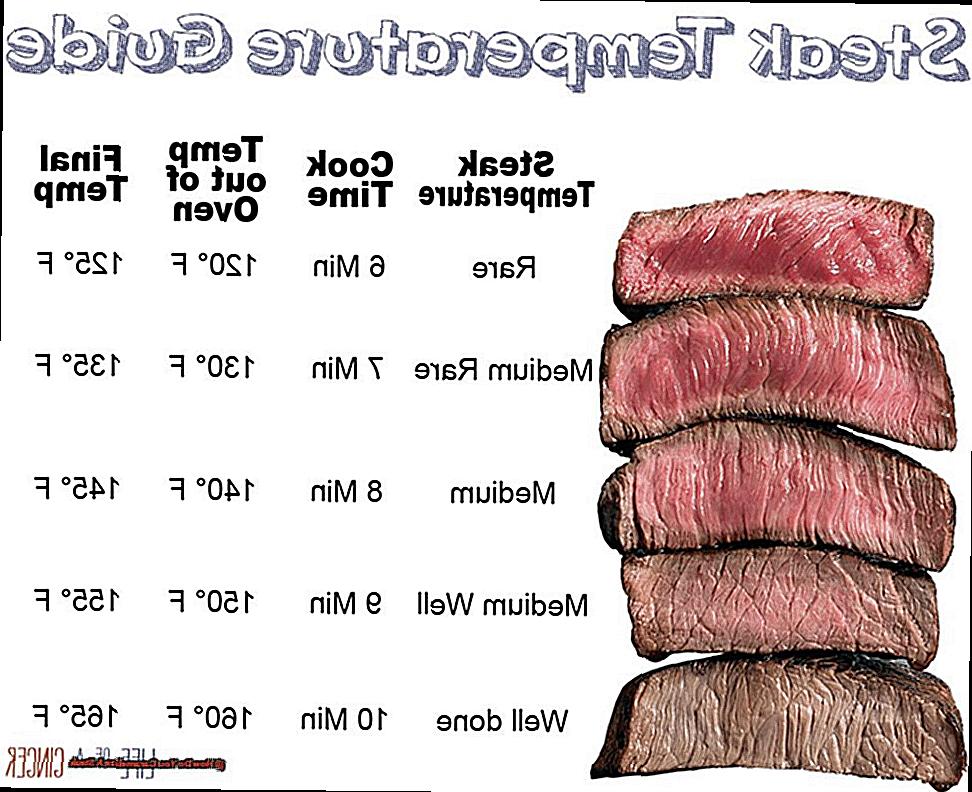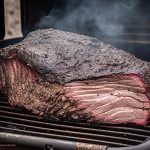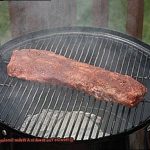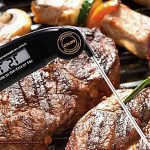Are you tired of lackluster steaks that leave your taste buds feeling unfulfilled? Do you crave a steak that’s bursting with flavor and texture? The answer lies in the art of caramelizing your steak.
Caramelization is the process of browning the surface of your steak to create a rich, intense flavor. This technique elevates the texture and aroma of your steak, making it an irresistible treat for your taste buds.
So, how do you caramelize a steak? It’s simpler than you might think. First, start with a high-quality cut of meat. Then, season it with salt and pepper to bring out its natural flavors.
Next, heat up your skillet on high and add some butter or oil to prevent sticking. Place the seasoned steak in the skillet and let it cook for about 2-3 minutes on each side without moving it. This will help achieve the ideal caramelized crust.
Once your steak has developed a beautiful brown crust, flip it over and repeat the process. Finally, remove it from heat and let it rest for 5 minutes before slicing into it. This allows the juices to settle and ensures maximum flavor.
In no time at all, you’ll be savoring every bite of your perfectly caramelized steak. It’s one of the simplest skills you can learn that will guarantee a delicious meal for yourself and those closest to you.
Contents
What is Caramelizing?
Caramelizing is a culinary technique that can enhance the flavor and appearance of your food. It’s a chemical reaction that occurs when high heat is applied to foods containing natural sugars, such as meat, fruits, and vegetables. This process causes the sugars to break down and form new compounds, resulting in an irresistible caramelized flavor and a mesmerizing browned appearance.
When it comes to caramelizing a steak, there are a few crucial steps to follow. Begin by bringing your steak to room temperature, which helps to ensure even cooking and prevents overcooking. Then, pat the steak dry with paper towels to remove any excess moisture, as this can hinder caramelization. Generously season your steak with salt and pepper, plus any other seasonings that you prefer.
To achieve a perfect caramelized crust on your steak, use high heat and a dry cooking method like grilling or pan-searing. Heat your preferred cooking surface to high heat, then add oil with a high smoke point to prevent sticking and burning. Place your steak on the surface and let it cook on one side until a brown crust has formed before flipping it over.
Caramelizing can add an extra layer of flavor and texture to your steak. The process causes the natural sugars present in the meat to break down and form new compounds, resulting in an enhanced flavor profile. By using high heat and a dry cooking method, you can achieve a perfect caramelized crust without overcooking the inside.
Once you have achieved the desired level of caramelization on both sides of the steak, remove it from the heat and let it rest for a few minutes before slicing into it. Resting allows the juices to redistribute throughout the meat, resulting in a more tender and delicious steak.
Preparing the Steak
Preparing the perfect steak is an art form that requires patience, precision, and a few key techniques. And it all starts with choosing the right cut of meat. Look for a steak with plenty of marbling, or fat running through the meat, as this will help to keep the steak moist and add flavor during cooking. It doesn’t have to be an expensive cut, just make sure it’s fresh and of good quality.
Once you have your steak, it’s time to prepare it for caramelization. Start by removing the steak from the refrigerator and allowing it to come to room temperature for about 30 minutes. This will ensure that the steak cooks evenly and doesn’t end up overcooked on the outside and undercooked on the inside.
Now it’s time to season your steak to perfection. Generously sprinkle salt and pepper on both sides of the steak, and feel free to add other seasonings or spices, such as garlic powder or paprika, depending on your preference. Just remember not to overdo it – you want to enhance the natural flavors of the meat, not overpower them.
To achieve a good sear, it’s crucial to dry the surface of the steak thoroughly. Pat it down with paper towels or leave it out in the open air for a few minutes before cooking. This will help ensure that the surface of the meat is dry enough to form a delicious caramelized crust when it hits the hot pan.
Finally, brush a little bit of oil or melted butter on both sides of the steak. This will prevent sticking and promote even browning during cooking. You don’t need much – just enough to lightly coat the surface of the meat.
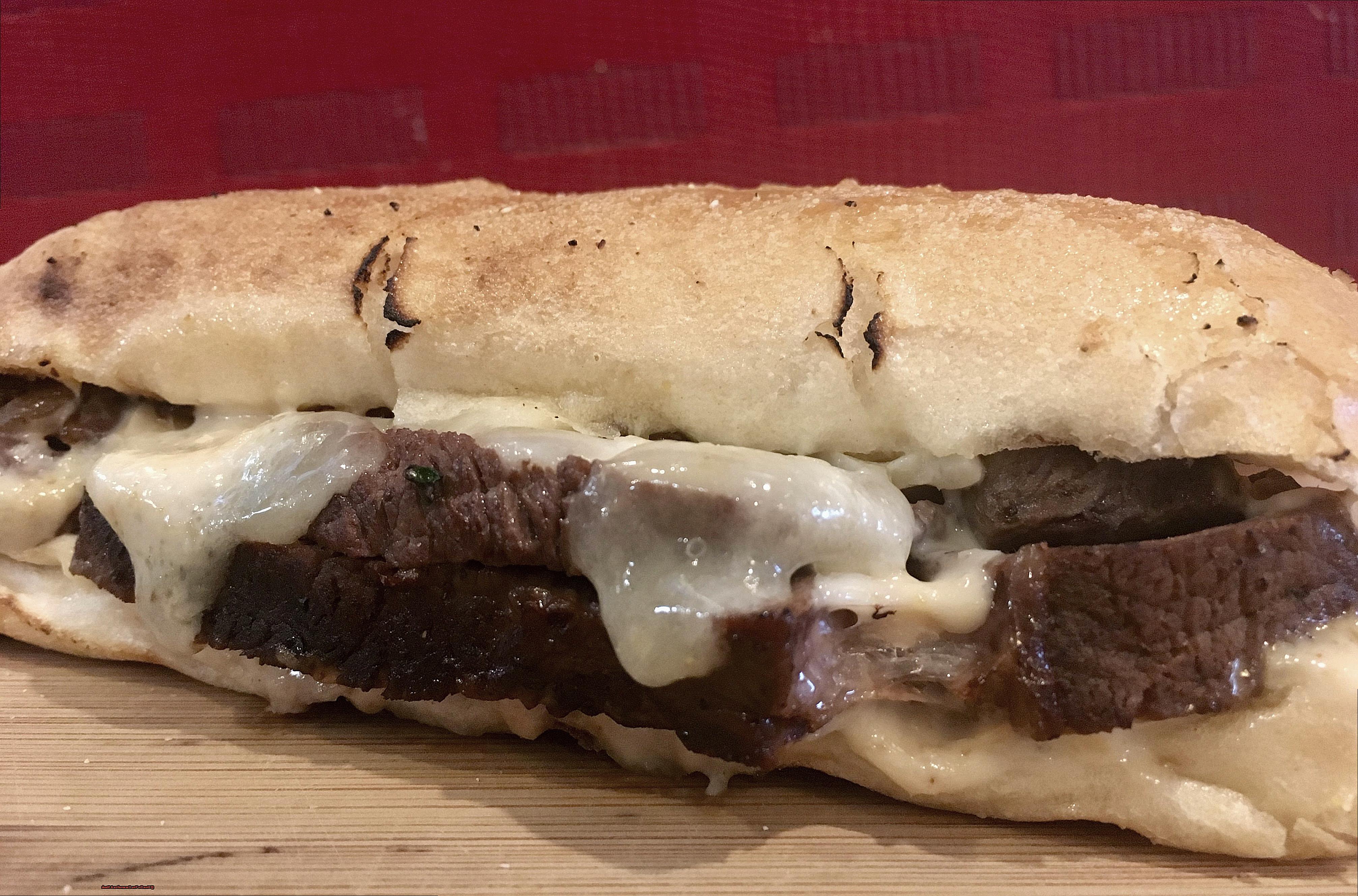
With your steak properly prepared, you’re now ready for the cooking and caramelizing process. Whether you prefer grilling, pan-searing, or broiling your steak, remember to let it rest for a few minutes after cooking to allow the juices to redistribute throughout the meat.
Seasoning the Steak
The secret to a perfect steak lies in the seasoning. As an expert, I’m here to share my top tips on how to season a steak for the ultimate flavor experience.
Start with a well-marbled cut of meat and let it come to room temperature before seasoning. This allows for even cooking and maximum flavor. When it comes to seasoning, use enough to cover the entire surface area of the steak. A general rule of thumb is one teaspoon of seasoning per pound of meat, but don’t overdo it. Too much seasoning can overpower the natural flavor of the steak, so start with less and add more if needed.
There are many types of seasonings that can be used on a steak, including salt, pepper, garlic, onion powder, and various herbs and spices. Some prefer a simple blend of salt and pepper, while others like to get more creative with their seasonings. The key is to use seasonings that complement the natural flavors of the meat.
In addition to dry seasonings, some people like to marinate their steaks in a liquid mixture before cooking. This adds additional flavor and can help tenderize the meat. Popular marinade ingredients include vinegar, soy sauce, citrus juice, and various herbs and spices.
Once your steak is seasoned to perfection, it’s time to cook it up for that delicious caramelization. Remember to let your steak rest for a few minutes after cooking so that the juices can redistribute throughout the meat.
Heating the Cooking Surface
Then let’s get started by discussing one of the most crucial steps in the process – heating the cooking surface.
Why is heating the cooking surface so important, you ask? Well, to achieve that beautiful brown crust on the outside of your steak, you need to trigger the Maillard reaction. This chemical reaction only occurs at high temperatures and results in a complex flavor profile that will elevate your steak to new heights.
So, how do you heat the cooking surface? There are a few options, but we’ll focus on two of the most popular – cast iron skillets and grills.
Cast iron skillet:
- A cast iron skillet is an excellent choice for achieving even cooking and retaining heat.
- Preheat on a high heat burner for at least five minutes before adding your steak.
- Test if it’s hot enough with a few drops of water – if they sizzle and evaporate immediately, it’s ready.
Grill:
- Whether you’re using a charcoal or gas grill, make sure to preheat it properly before adding your steak.
- For charcoal grills, preheat for at least 20-30 minutes to ensure that the coals are hot enough.
- With gas grills, turn all burners to high and let them heat up for 10-15 minutes.
No matter which method you choose, make sure your cooking surface is properly heated before adding your steak. This will ensure that you get that perfect caramelized crust while keeping the inside tender and juicy.
Adding Oil to the Surface or Steak
And if you want to achieve that level of perfection, then adding oil to the surface or directly to the pan is a must. But before you start pouring any old oil on your steak, let me guide you through the process as an expert in this field.
Firstly, it’s crucial to choose the right oil for the job. High smoke point oils such as canola, vegetable, or grapeseed oil are ideal for high-heat cooking methods like caramelizing a steak. These oils can withstand high temperatures without burning and imparting a bitter taste to the meat.
Now that we’ve got that covered, let’s talk about how to add the oil. There are two ways to do it- adding it directly to the pan or coating the surface of the steak with it.
If you choose to add oil to the surface of your steak, use a brush or your hands to apply a thin layer of oil evenly. This will not only help prevent sticking but also create a beautiful crust on the outside while keeping the inside juicy and tender.
Alternatively, you can add oil directly to the pan before cooking. Heat the pan over medium-high heat and add a tablespoon of oil. Swirl it around to coat the bottom of the pan evenly. Once hot, add your seasoned steak and let it cook undisturbed for 3-4 minutes before flipping it over.
But remember not to go overboard with your oil usage. Using too much can cause flare-ups and result in uneven cooking. So use sparingly and remember that a little goes a long way when it comes to adding oil to your steak.
Placing the Steak on the Cooking Surface
The first step is placing the steak on the cooking surface, and it’s not just about any surface. As an expert, I’ve researched the best practices to ensure that your steak turns out perfectly caramelized.
Firstly, let’s talk about the cooking surface. Whether you prefer a grill, cast iron skillet, or griddle, each has its benefits and affects how your steak cooks and caramelizes. Grills are perfect for imparting that smoky flavor and achieving beautiful grill marks, while cast iron skillets or griddles are perfect for searing and creating a crusty exterior.
Once you have selected your cooking surface, it’s time to place the steak on it. For a grill, preheat it to medium-high heat and oil the grates before adding the steak. Before placing it on the grill, pat the steak dry with a paper towel to ensure that it caramelizes correctly.
For a cast iron skillet or griddle, heat it over medium-high heat until it’s hot enough to sear the steak. Add a thin layer of oil to prevent sticking and aid in caramelization.
When placing the steak on the cooking surface, ensure that it’s evenly distributed and not overcrowded with other pieces of meat or food. Overcrowding can lead to uneven cooking and prevent proper caramelization.
Finally, patience is key. Resist the urge to move or flip the steak too soon after placing it on the cooking surface. Let it sit for 2-3 minutes before checking if it’s ready to be flipped. Moving or flipping too soon can interfere with the caramelization process and prevent that perfect crust from forming.
Achieving Desired Level of Caramelization
As a connoisseur of the perfect steak, I understand the importance of achieving the desired level of caramelization. It’s a tricky process that requires a combination of key factors like temperature, cooking time, and seasoning. But don’t worry, with my insider tips, you’ll be able to achieve a perfectly caramelized and juicy steak every time.
Step One: Choose the Right Cut
The first step in achieving the desired level of caramelization is selecting the right cut of steak. Look for a cut with some marbling like ribeye, New York strip or filet mignon. This will help create a better caramelized crust.
Step Two: Season Generously
Once you’ve selected your cut, pat it dry with a paper towel and season it generously with salt and pepper or your preferred seasoning. This not only adds flavor but also helps create a crispy crust on the outside of the steak.
Step Three: Preheat Your Grill or Pan
Next, preheat your grill or pan to high heat. The ideal temperature for caramelizing steak is between 450-500°F. If using a pan, add a small amount of oil and let it heat up until it begins to shimmer.
Step Four: Sear the Steak
Place your seasoned steak on the grill or pan and let it cook undisturbed for 2-3 minutes before flipping it over to sear the other side. Don’t be tempted to move the steak around too much as this can prevent proper caramelization from occurring. The high temperature creates a crispy, caramelized crust on the outside while keeping the inside juicy and tender.
Step Five: Monitor Internal Temperature
As you cook the steak, keep an eye on the internal temperature using a meat thermometer. For medium-rare steak, the desired internal temperature is 130-135°F. Once your steak has reached its desired temperature, remove it from heat and let it rest for a few minutes before slicing and serving.
Removing from Heat and Letting Rest
You’ve spent time and effort to get here, so don’t ruin it by skipping the crucial step of removing the steak from heat and letting it rest. This step is just as important as all the others you took to get your steak to this point.
Why is it important to let your steak rest? Juices from the meat accumulate at the center during the cooking process. When you remove the steak from heat, these juices continue to flow towards the surface, which makes for an uneven distribution of moisture in the steak. By letting the steak rest for at least 5-10 minutes, the juices redistribute throughout the meat, making it juicier and more tender.
To let your steak rest, simply remove it from the heat source and place it on a cutting board or plate. Tenting it with aluminum foil to keep it warm while it rests is essential. The tented foil also helps to keep any juices from escaping. The amount of time needed for resting depends on the thickness of the steak; thicker cuts require more resting time.
While waiting for your steak to rest, use this extra time to prepare any sides or sauces to go alongside it. This is also an ideal time to gather your thoughts and relax before indulging in this mouth-watering dish.
Once the resting period is over, remove the foil tent and slice the steak against the grain for optimal tenderness. It’s important to cut against the grain because this technique breaks down muscle fibers, making them easier to chew.
Conclusion
In conclusion, caramelizing a steak is no easy feat. It requires patience, precision, and a few key techniques that can transform an ordinary piece of meat into an extraordinary culinary masterpiece. To achieve the perfect caramelized crust on your steak, you must start with a high-quality cut of meat that has plenty of marbling. Then, season it generously with salt and pepper to bring out its natural flavors.
Next, preheat your skillet or grill to high heat and add some oil or butter to prevent sticking. Once the cooking surface is hot enough, place the seasoned steak in the skillet or on the grill and let it cook undisturbed for 2-3 minutes on each side without moving it. This will allow the steak to develop a beautiful brown crust that’s packed with flavor.
Caramelization is a chemical reaction that occurs when natural sugars in foods like meat are exposed to high heat. The result is a mesmerizing browned appearance and an irresistible caramelized flavor that’s hard to resist.
To achieve optimal caramelization levels, it’s important to monitor the internal temperature of your steak using a meat thermometer until it reaches your desired level of doneness. Once done, remove it from heat and let it rest for at least 5-10 minutes before slicing against the grain for optimal tenderness.

